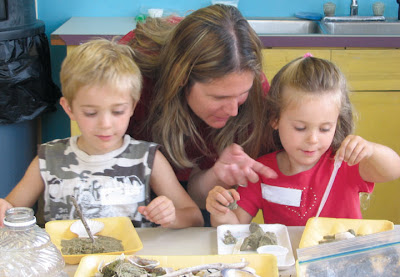
By Janice O’Donnell, Executive Director, Providence Children’s Museum
Elementary schools seem to be having an awful lot of trouble with recess lately. There are complaints that recess is a fertile ground for bullying, leads to misbehavior and injuries, is difficult to supervise, and takes away from class time needed for reading and math. As a result, school recess is being reduced in many schools, especially in urban schools with high poverty and high minority rates. A 2005 US Department of Education survey revealed an alarming recess gap: first graders in 18 percent of elementary schools with an extremely high poverty rate do not have recess, compared to 4 percent in schools with low poverty rates. Since 2001 and the advent of No Child Left Behind, 20 percent of the nation’s school districts have reduced recess time in favor of math and language arts (Center on Education Policy).
At the same time, research proves how valuable – indeed necessary – recess is for optimum learning and development. An American Academy of Pediatrics study of 11,000 third graders showed that those with more recess time had better classroom success. In a nationwide Gallup poll commissioned by the Robert Wood Johnson Foundation, more than 80 percent of elementary school principals reported that recess has a positive impact on academic achievement and two-thirds noted that students listen better after recess and are more focused in class.
Hardly a surprise. Who doesn’t need to stretch one’s body and mind after sustained time on a task? Today’s coffee break might take the form of five-minute-yoga, but we still recognize that adults need breaks from work during the day. Kids need them more. It is physically more difficult – takes more energy – for a six-year-old to sit in one place for an hour than to run around the schoolyard. And leading kids in calisthenics is no substitute for recess. Kids need to play. They need free, self-directed play where they make up their own rules, set their own challenges, solve their own problems. Recess gives them time during the school day to move their bodies, interact with friends, daydream, pretend, invent – all necessary for developing imagination, creativity, social skills and resiliency, as well as strong bodies.
So we need to stand up for recess. I urge parents to tell their children’s principal, their school committee and superintendent that they expect elementary school children to have at the very least 20 minutes of recess every day and much more free play time for preschoolers and kindergarteners.
And, for those fighting that good fight, I offer some perspective. Over a year’s time, children only spend 20 percent of their waking hours in school. It’s true, try the math: 6 hours x 180 days. I know that for weeks it seems kids are spending all their time getting ready for school, being at school and doing homework. But parents and caregivers are in charge of much more of their children’s time than schools are and we can make sure that they have plenty of time for free play. We can turn off the TV and computer. We can be careful about enrolling them in too many or overly consuming extracurricular activities. We can send them outside to play and trust that they’ll be just fine. Better than fine – they’ll be doing exactly what they need to do to grow their minds and bodies and spirits.
Other resources:
• Don’t Let Recess Die! Six Ways to Save Recess at Your Child’s School by Darell Hammond, CEO of KaBOOM!, in The Huffington Post
• The 3 R’s? A Fourth is Crucial, Too: Recess by Tara Parker-Pope in The New York Times
• Crisis in the Kindergarten: Why Children Need to Play in School by the Alliance for Childhood











 This post was contributed by Mary Scott Hackman, the Museum’s early childhood program developer.
This post was contributed by Mary Scott Hackman, the Museum’s early childhood program developer. Our classroom will change from week to week. Depending on the activity at hand, children ages 3 to 6 will be invited into the color lab; the wood-working shop; the art studio. They will be presented with assorted papers, natural materials and, as always, recyclables so that their creations will be their own, each one different and unique. Sometimes they will get to use real tools, like a pipette in the art studio or a hand-drill in the workshop.
Our classroom will change from week to week. Depending on the activity at hand, children ages 3 to 6 will be invited into the color lab; the wood-working shop; the art studio. They will be presented with assorted papers, natural materials and, as always, recyclables so that their creations will be their own, each one different and unique. Sometimes they will get to use real tools, like a pipette in the art studio or a hand-drill in the workshop.

